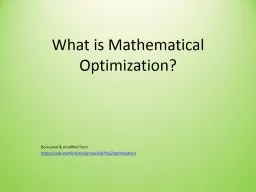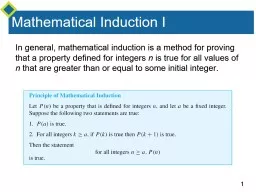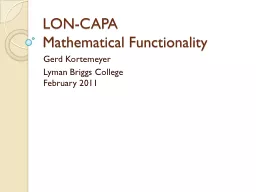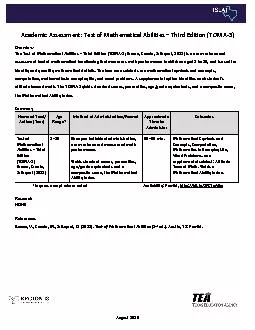PPT-More Mathematical Techniques
Author : jane-oiler | Published Date : 2019-11-21
More Mathematical Techniques Special Number Sequences Fibonacci numbers Fib0 0 Fib1 1 Fibn Fibn1Fibn2 Dynamic Programming is usually used But there are faster
Presentation Embed Code
Download Presentation
Download Presentation The PPT/PDF document "More Mathematical Techniques" is the property of its rightful owner. Permission is granted to download and print the materials on this website for personal, non-commercial use only, and to display it on your personal computer provided you do not modify the materials and that you retain all copyright notices contained in the materials. By downloading content from our website, you accept the terms of this agreement.
More Mathematical Techniques: Transcript
Download Rules Of Document
"More Mathematical Techniques"The content belongs to its owner. You may download and print it for personal use, without modification, and keep all copyright notices. By downloading, you agree to these terms.
Related Documents














